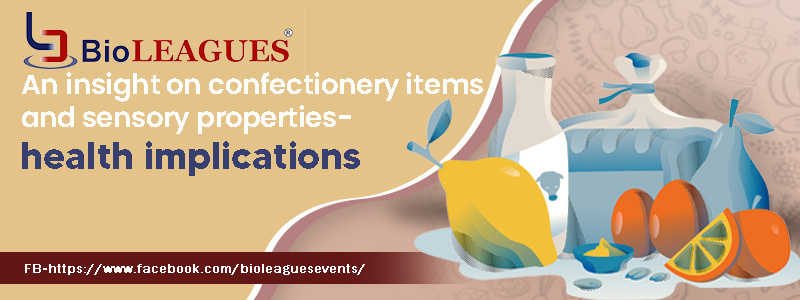Confectionery hydrogel products are highly popular and demanding among consumers due to their visual attractiveness, texture, and mouthfeel [1].Particularly, the confectionery hydrogel products are manufactured with gelling agents, sucrose, glucose syrup, acids, flavorings, and colorants [2]. Thus based on processing and mixture of ingredients it is possible to obtain hydrogel products with different textures, including gelatin gels with soft texture [3], gummy characterized by a firm, soft and chewy texture structure [4], and marshmallows or aerated gummy (conferred by air bubbles) with a soft and elastic texture [5],.
On the other hand, the growing awareness and knowledge (individual and community) among consumers have encouraged food industries to replace ingredients harmful to human health used in many food products. However, confectionery hydrogel products have been questioned due to their high sugar content, calorie density and low nutritional value. This combination has been associated with obesity, diabetes, cardiovascular diseases, and hypertension [6]. Thus, consumers demand healthier confectionery hydrogels foods with lower sugar content and higher natural antioxidants than current commercial products [7]. Therefore, researchers are aiming to improve the nutritional value and consumer appreciation of the same. The most popular strategies are based on sugar substitution through low-caloric sweeteners, such as sorbitol, isomaltulose, and stevia [6,8,9]. Hence, various bioactive compounds have been fused into hydrogels products, such tea extract [7,10], hibiscus extract [11], betalain-rich extract [12], watermelon juice [13], pomegranate juice [14], and cryoconcentrated blueberry juice [15,16].
However, it is essential to understand that these bioactive compounds have probable chances of losing their beneficial bioactivity during storage due to their instability under various ambient factors [17,18]. Therefore, it is important to establish their stability through different storage conditions. In this sense, kinetic models have been used to predict the influence of storage on the stability of bioactive compounds [17]. Tutunchi et al. [18] and Rodríguez-Sánchez et al. [19] reported that betanin and betaxanthins’ degradation in gummy candy considers first-order kinetics. However, there are few studies on the degradation kinetics of bioactive compounds in commercial hydrogels based on confectionery products during storage conditions(9,11,16,17), which is important for the food industry due to their interest in the development of confectionery products with health-promoting effects.
Many adults consume almost double the daily recommended amount of sugar. With excess consumption of sugar and consequential health problems arising, food manufacturers are inspecting methods to reduce sugar while maintaining similar functional and sensory properties. [20]. Reducing sugar in confections is possible. However, the challenge is finetuning the balance between texture and sweetness perception. Texture plays a significant role in the sweetness perception of confections, with firmer products often being perceived as less sweet. Depending on the method, 20–40% of sugar can be removed from confections without sacrificing sensory acceptance, often replaced with multiple ingredients. Further investigation is needed on confection models and how the emerging health trends set the foundation for sugar reduction.
Author: Shaoli De
Consultant Nutritionist and Dietitian at Nurture Nutrition Solutions,
Kolkata, West Bengal





